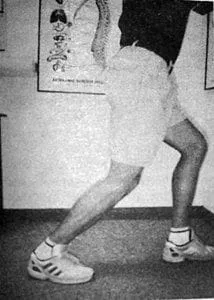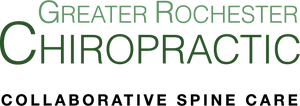By Keith M. Jeffers, DC, CCSP
Achilles tendon injuries are one of the most common overuse injuries in recreational sports. A very small percentage of these injuries are diagnosed and treated by doctors of
chiropractic.
What is especially interesting is that a high percentage of these injuries are caused by a posterior calcaneus subluxation.
The first step in evaluation of an Achilles tendon injury is palpation of the injured area. A ruptured Achilles tendon must first be ruled out. This is done by performing Thompson's
Test, which calls for squeezing the calf muscle and checking for the normal plantar flexion of the foot response. If a complete rupture is present, I would recommend a consultation with your
orthopedic referral doctor. Most cases of severe rupture will be in the group of males over the age of 40. The majority of non-ruptured tendon injuries will not require surgery if proper
conservative care is provided.
Palpation of the Achilles tendon may reveal a thickening of the entire tendon or isolated "bumps." Point tenderness may extend into the musculoskeletal junction of the soleus and
gastrocnemius muscles. The muscle bellies of the soleus and gastrocnemius muscles may exhibit hypertonicity and point tenderness. The origin of the soleus and gastrocnemius muscles should be
palpated for tenderness. Remember, the Achilles tendon is merely connective tissue between the calf muscles and the point of insertion of the calcaneus. Many cases of Achilles injuries are
caused by a lack of flexibility of the calf muscles. The gastrocnemius muscle is stretched with the knee fully extended and the soleus is only stretched with the knee flexed.
My experience is that most athletes only stretch their calves with their knee fully extended and therefore never fully stretch the soleus muscles. (See Figure 1 for the correct soleus
stretch position).

In all Achilles tendon injuries, I adjust for a posterior calcaneus. In many cases, this is the cause of the injury. This is performed by placing the patient prone, with the knee flexed
at 90o. The patient's heel is placed in the web of the doctor's contact hand and the doctor's other hand is placed on the top of the foot. (Figure 1) Force is applied with both the contact
and stabilizing hands causing the foot to be "whipped" quickly. An audible "pop" is frequently heard. This adjustment can be somewhat painful if the Achilles is inflamed. I inform the patient
that it may hurt momentarily. I always repeat this procedure on the non-injured calcaneus.
The rest of the foot, the knee, and the pelvis are always evaluated for subluxations. It is of prime importance that we treat the entire musculoskeletal system.
Poor foot mechanics are another major cause of Achilles tendinitis. Approximately 60% of the population has some degree of foot overpronation. This rolling in of the foot may eventually
lead to overuse injury of the Achilles tendon.
Evaluation of overpronation is accomplished by having the patient alternately stand on one foot at a time. Watch for a medial rotation of the tibia and a dropping of the arch. If
overpronation is present, a custom orthotic is prescribed.
Other treatment procedures for Achilles tendonitis would include myofascial therapy, electrical stimulation, cryotherapy, stretching, and ultrasound.
In conclusion, doctors of chiropractic are the physicians of choice for Achilles tendinitis.
